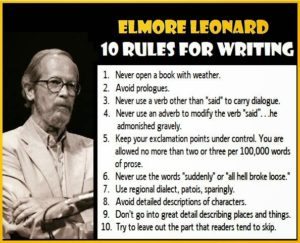This post by Chuck Wendig originally appeared on his terribleminds site on 5/26/15. Warning: strong language.
Said it before, will say it again: Mad Max: Fury Road is the dust-choked rocket-fueled orifice-clenching crank-mad feminist wasteland batfuck doomsday opera you didn’t know you needed. It’s like eating fireworks. It’s like being inside a rust tornado. It’s like having a defibrillator pad applied directly to your genitals but somehow, you love it?
It’s not a perfect movie.
But it’s amazing just the same.
And part of — for me! — what makes it amazing is how easily it flaunts its rule-breaking. Writing — particularly the very-patterned art of screenwriting — comes with all these preconceived sets of “rules” or “guidelines,” and like most creative rules and guidelines, they’re half-useful and half-dogdick. It’s great once in a while to be reminded why the rules work. But it can be even more illuminating to realize when something works in spite of those rules — in direct contravention to what you expect can and should happen.
And I wanna talk about that just a little. Real quick.
Hold still. *fires up the defib pads*
CLEAR.
bzzt
Begins With Action And Then Action Action Holy Fuck More Action
Beginning with action is hard. Because a lot of the time, you need context. You jump right into some actionstravaganza and you feel lost — unmoored, drifting, caught up in OMG THIS IS SUPPOSED TO BE EXCITING BUT MOSTLY IT FEELS LIKE ACTION FIGURES BEING FIRED OUT OF A CANNON AGAINST A WALL BECAUSE I DO NOT YET HAVE A REASON TO CARE. It’s all whizz-bang-boom, but ultimately? Hollow as a used grenade. Shallow as a puddle of sun-baked urine.
Fury Road is like, “Yeah, fuck you, mate,” and then instantly there’s a car chase? And then like, five minutes of setup and another car chase that goes until the middle of the movie? And then a sequel to that car chase that ends the movie. On paper, that shouldn’t work. On screen, it roars like an engine and drags you behind it like you’re chained to the goddamn bumper.
Read the full post on terribleminds.

